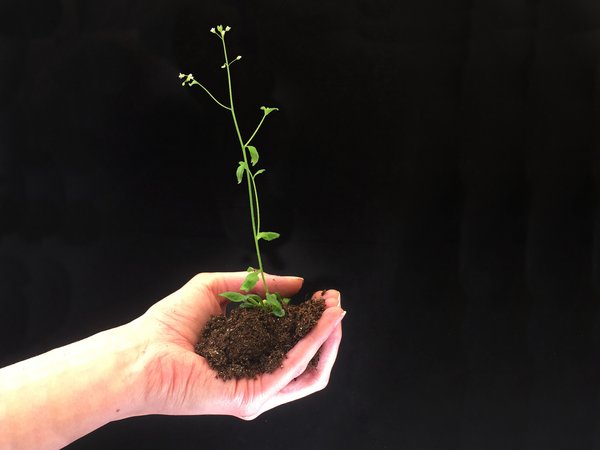- Share this article
- Subscribe to our newsletter
How plants sense phosphate
Phosphate is an essential mineral element for all living organisms. At the same time, phosphate resources on Earth suitable for fertiliser production are limited and non-renewable. Furthermore phosphate used in agriculture can contaminate aquatic ecosystems such as rivers, lakes and oceans.
Therefore, reducing phosphate inputs in agriculture (without negatively impacting yields) would have two advantages: phosphate reserves could last longer, and less phosphate would end up in lakes and oceans. To achieve this, researchers are working on strategies to make crops more phosphate-efficient.
Plants monitor their phosphate reserves
The exact mechanisms used by plants and other organisms to recognise whether they have sufficient phosphate to run their cellular processes are largely unknown. In recent years, scientists have discovered that plants do not perceive phosphate directly, but rather indirectly, through the signalling molecule InsP8, a type of inositol pyrophosphate. So-called SPX proteins help with this. “What these results are indicating is that inositol pyrophosphates like InsP8 serve as a proxy for the overall plant phosphate status,” says Dr Ricardo Giehl, a Principal Investigator from the Leibniz Institute of Plant Genetics and Crop Plant Research (IPK) in Gatersleben.
However, it was previously unclear how plants produce InsP8 and its precursor InsP7. To solve this puzzle, the research team at the University of Bonn, recently applied a genetic trick: the scientists used baker's yeast to express relevant plant kinases, i.e. enzymes that are able to transfer a phosphate residue from ATP, the cell’s “energy currency”, to other substrates. With this approach, they identified ITPK1 as a putative InsP6 kinase for setting the important signalling molecules in motion.
In the new study, which was published in the journal "Molecular Plant" in July, the scientists show that the enzyme ITPK1 indeed works as a functional InsP6 kinase in plants and generates 5-InsP7, the direct precursor of InsP8. The researchers were also able to demonstrate that the synthesis of inositol pyrophosphates reacts very sensitively to phosphate, and that this regulation takes place not only in plants (including mosses), but also in human cells.
"Because inositol pyrophosphates are very unstable, we were only able to detect them in plants after developing a new method in our laboratory a few years ago,” explains Esther Riemer from the Institute for Crop Science and Resource Conservation (INRES) at the University of Bonn, and first author of the study.
"Depending on the cellular energy status, and thus indirectly also on how much phosphate is available, ITPK1 can either initiate the synthesis of InsP8, which inhibits phosphate acquisition, or function as an ATP synthase, which ultimately switches off the InsP8 signal thus activating phosphate mobilisation and uptake,” says Dr Ricardo Giehl.
With the help of a new mass spectrometric method developed by the research team led by Professor Henning Jessen from the Institute for Organic Chemistry at the University of Freiburg, the scientists also identified new forms of plant inositol pyrophosphates. These include the isomer 4/6-InsP7.
On the way to sustainable crop production
"The results of this and previous studies have far-reaching consequences for our understanding of how organisms sense phosphate deficiency and how physiological responses are generated depending on the energy status," says Professor Gabriel Schaaf from INRES. "Our work provides new breeding targets and opens avenues on how new breeding methods, such as genome editing, might be used to increase phosphate use efficiency and thereby contribute to a more environmentally friendly and resource-saving crop production."
(University of Bonn/wi)
Publication:
Esther Riemer, Danye Qiu, Debabrata Laha, Robert K. Harmel, Philipp Gaugler, Verena Gaugler, Michael Frei, Mohammad-Reza Hajirezaei, Nargis Parvin Laha, Lukas Krusenbaum, Robin Schneider, Adolfo Saiardi, Dorothea Fiedler, Henning J. Jessen, Gabriel Schaaf & Ricardo F.H. Giehl: ITPK1 is an InsP6/ADP phosphotransferase that controls phosphate signaling in Arabidopsis. Molecular Plant, https://doi.org/10.1016/j.molp.2021.07.011





Add a comment
Be the First to Comment